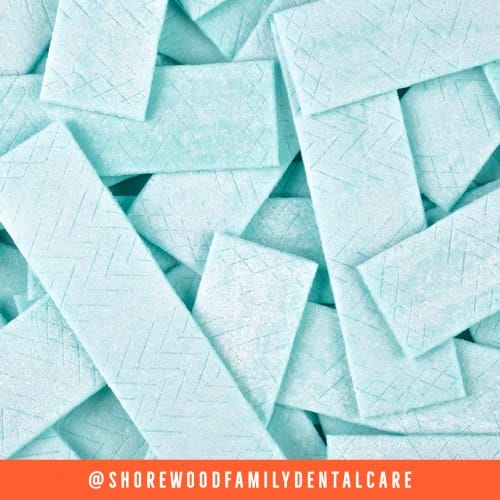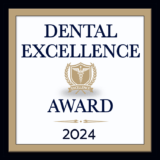
We know that sugar damages teeth by creating acids that eat away at enamel and attract bacteria that cause gingivitis and gum disease. It takes about 20 minutes for your saliva to clear the sugar away from your teeth after you’re done eating or drinking something containing sugar. But too much sugar may be more than your saliva can handle and over time, leaving you susceptible to cavities. Brushing your teeth after consuming sugar is the best way to clean your teeth. When you’re on the go, it can be difficult to find the time or place to brush. Fortunately, chewing on sugar-free gum can help protect your teeth and gums when it’s not possible to use a toothbrush and fluoridated toothpaste.
How Sugar-Free Gum Helps
Unlike regular gum, sugar-free gum is sweetened with ingredients that don’t cause cavities, such as xylitol, sorbitol, aspartame and stevia. Chewing sugar-free gum help increase the flow of saliva in your mouth to wash away sugars and neutralize acids. Saliva also naturally contains calcium and phosphate to strengthen teeth.
Optimal Usage
After you are done eating and/or drinking, chewing sugar-free gum for about 20 minutes to increase saliva flow. It’s a good idea to avoid fruit-flavored sugar-free gums because they may contain acidic preservatives or flavorings that can damage teeth.
An added benefit is that chewing sugar-free gum may help reduce stress levels. Stree is a known contributor to oral health issues such as gum disease, grinding teeth and clenched jaws.
Not A Substitute For Oral Care
While chewing sugar-free gum is a good way to help remove sugars from teeth after eating or drinking, it’s not a replacement for good oral health habits. Rather it’s just a tool in your dental health arsenal.
It’s important to continue to brush twice a day, floss daily and get regular teeth cleanings from dental care professionals.
If you’re looking for a family dentist near Joliet, please contact Shorewood Family Dental Care at 815-725-5991 or book an appointment online.




